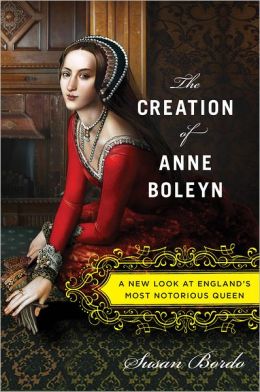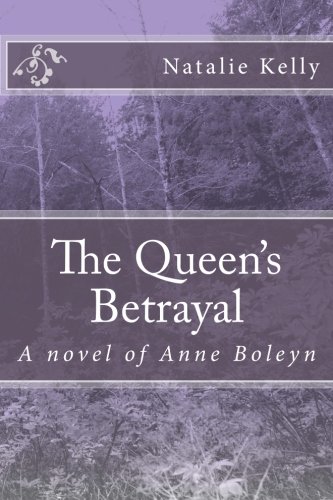 On her web site, Susan Bordo says that her goal in writing The Creation of Anne Boleyn: A New Look at England’s Most Notorious Queen was to delve into the question of why Anne Boleyn and her story continue to fascinate new generations. What was so special about her that Henry VIII risked everything to have her? Through a meticulously researched and carefully presented cultural history of Anne and her legend, Bordo uses available sources such as letters from Imperial Ambassador Eustace Chapuys and published accounts of Anne’s last speeches. Many of your favorite Tudor historical fiction novelists come under Bordo’s laser gaze — Alison Weir, Hilary Mantel, and especially Phillippa Gregory’s portrayals of Anne Boleyn and the Tudor court are examined and judged for their accuracy and point of view. Bordo also examines more contemporary visions of Anne, including a thorough look at Showtime’s The Tudors and the movie Anne of a Thousand Days. She includes interviews for the actresses who played Anne, Natalie Dormer and Genevieve Bujold. I thoroughly enjoyed this book, but found certain sections a little repetitive, as if it could have used just a little more editing. This is not for newbie Anne Boleyn fans, but is a welcome addition to the canon for people who know and love Tudor history.
On her web site, Susan Bordo says that her goal in writing The Creation of Anne Boleyn: A New Look at England’s Most Notorious Queen was to delve into the question of why Anne Boleyn and her story continue to fascinate new generations. What was so special about her that Henry VIII risked everything to have her? Through a meticulously researched and carefully presented cultural history of Anne and her legend, Bordo uses available sources such as letters from Imperial Ambassador Eustace Chapuys and published accounts of Anne’s last speeches. Many of your favorite Tudor historical fiction novelists come under Bordo’s laser gaze — Alison Weir, Hilary Mantel, and especially Phillippa Gregory’s portrayals of Anne Boleyn and the Tudor court are examined and judged for their accuracy and point of view. Bordo also examines more contemporary visions of Anne, including a thorough look at Showtime’s The Tudors and the movie Anne of a Thousand Days. She includes interviews for the actresses who played Anne, Natalie Dormer and Genevieve Bujold. I thoroughly enjoyed this book, but found certain sections a little repetitive, as if it could have used just a little more editing. This is not for newbie Anne Boleyn fans, but is a welcome addition to the canon for people who know and love Tudor history.
 Author Natalie Kelly did a nice job of making Anne Boleyn accessible and her sympathetic point of view is clearly visible in The Queen’s Betrayal: a novel of Anne Boleyn. Told in first person, we first meet Anne as she returns to England after her years at the French court. Her sister Mary is already entangled with King Henry VIII and the Boleyn family is on the rise. We know the rest of the story, and it is told without adding much new information to the body of literature about Anne. Most Anne Boleyn groupie-novelist-biographers tend to focus on one of the shadowy elements in the story of Anne, and Kelly has decided that Anne’s relationship with Henry Percy is the one that intrigues her. Unfortunately, I read this novel on my Kindle (having received it through a free offer), and the work would benefit from editing. As other reviewers have noted, Natalie Kelly’s attempt to make the story accessible to readers by lightening up the language doesn’t work as well as she had hoped. In addition, there are many wrong verb tenses and (I believe) unintentional misspellings. Overall, it’s a quick read for the seasoned Boleyn fan and possibly a good entry novel into the Boleyn saga if a reader is just starting out on a Tudor reading journey.
Author Natalie Kelly did a nice job of making Anne Boleyn accessible and her sympathetic point of view is clearly visible in The Queen’s Betrayal: a novel of Anne Boleyn. Told in first person, we first meet Anne as she returns to England after her years at the French court. Her sister Mary is already entangled with King Henry VIII and the Boleyn family is on the rise. We know the rest of the story, and it is told without adding much new information to the body of literature about Anne. Most Anne Boleyn groupie-novelist-biographers tend to focus on one of the shadowy elements in the story of Anne, and Kelly has decided that Anne’s relationship with Henry Percy is the one that intrigues her. Unfortunately, I read this novel on my Kindle (having received it through a free offer), and the work would benefit from editing. As other reviewers have noted, Natalie Kelly’s attempt to make the story accessible to readers by lightening up the language doesn’t work as well as she had hoped. In addition, there are many wrong verb tenses and (I believe) unintentional misspellings. Overall, it’s a quick read for the seasoned Boleyn fan and possibly a good entry novel into the Boleyn saga if a reader is just starting out on a Tudor reading journey.
For a visit to Anne Boleyn’s childhood home, take a step back in time and in my archives. Hever Castle was on my bucket list and I was not disappointed!
This post includes affiliate links. Please see my advertising disclosure for details.